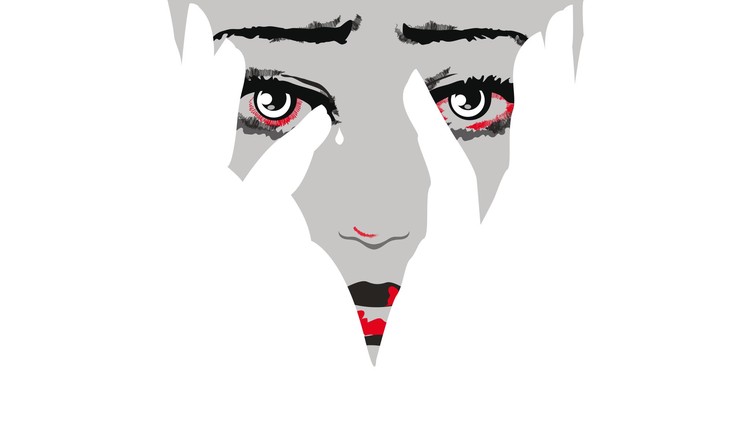In an article titled ” Effects of Culture on Recovery From Transient Psychosis” the author asks why premodern cultures studied by the World Health Organization had 10 times the rate of acute onset psychosis followed by full recovery as that found in more modern cultures.
The author contends that “Traditional treatment in a premodern society usually consists of a prescribed period of rest; sympathy; heightened social support; alleviation of underlying social stresses; exploration of alternative coping
strategies; and various types of traditional healing rituals, sometimes lasting days or weeks, and frequently resulting in the full recovery of the patient.”
While “modern medical experts” make fun of “primitive” perspectives about spirits and the use of “witch doctors” to address them, it seems that any truly “evidence based” approach to understanding psychosis would be more interested in figuring out how and why they were so effective.
Contrast the “primitive” approach with the relative isolation and drugging imposed on the newly diagnosed psychotic person in in a modern culture. The person is identified as “biochemically imbalanced” rather than overcome by stressful life events, no attempts are made to really understand him or her, the experience is identified as an illness with no spiritual consequences, and no coping tools are suggested beyond taking pills as prescribed.
I am reminded of an early drug trial on antipsychotics. They had 4 groups, three groups were each on a different antipsychotic, while the fourth group was a placebo. After about 6 weeks, each of the drug groups was doing better than the placebo group. But when they came back and checked on how everybody was doing after a year, they found that the group that had been started on placebo was doing better than any of the three groups started on drugs. Instead of concluding that there was something wrong with rushing people into drugs however, the experimenters hypothesized that the group initially started on placebo was only doing better because they had been noticed by others to be doing worse because of not being on drugs, and this had elicited sympathy and concern from the people who noticed, and it was the extra care that they received that resulted in them doing better when measured a year later. Of course, it never occurred to the experimenters that giving a drug to people that made them seem like they didn’t need extra support, resulting in them not getting the support they really needed, so that they would be doing worse later, may not have been a good idea. (Not to mention that more drugs meant more risk of nasty side effects as well.) And so the modern era of drugging and lack of empathy was begun.
Fortunately, there are modern countries, or at least parts of modern countries, that are rejecting the emphasis on drugs, and going back to the human connection (though they focus on dialog rather than “spirits.”
My friend Daniel Mackler reports on a recent trip he had exploring how in the far north of Europe, people now have many years of experience using more community-based methods that rely much more on human contact and understanding than on medications. He writes:
“I was just at an amazing conference in Gothenburg, Sweden, and wanted to share a bit about it. It was on alternatives treatments for dealing with major psychiatric problems, and it was hosted by an organization called the Family Care Foundation—the founder of which is an ISPS-international member. Her name is Carina Hakansson, and she is a Swedish social worker and psychotherapist. She started her program in 1987, and they take people with severe problems (schizophrenia included) and place them with host families, as an alternative to psychiatric hospitalization. it is all voluntary. the people receive little or no meds, and they AND the host families all get group therapy, and some individual therapy, and also the host families get supervision. They appear to be getting excellent results—and they have gotten funded by the Swedish government, so no one has to pay anything. Also, Carina is supervised by Jaakko Seikkula, who started the Open Dialogue Method in Finland and is presently, as far as I know, getting the best documented results in terms of full (non-medication) recovery rates from schizophrenia in the world. He was at the conference too—gave a great lecture. It was really quite an inspiring time—an incredible group of people. There were some other ISPS-international members there as well—from Denmark, Sweden, Norway, and Finland.
“The program is in Gothenburg, Sweden, and is called the Family Care Foundation. Its founder is Carina Hakansson, and she is an ISPS-international member. She wrote a book, translated into English (I wrote an amazon review for it a few months back) called “Ordinary Life Therapy,” and it’s good.
“Their website (mostly in…Swedish) is http://www.familjevardsstiftelsen.se
“They are really good people—a wonderful staff, totally dedicated, like a family themselves. I also met some of their host family members—good people, made ME want to live with them!
“What excites me is that watching what these Scandinavians are doing reminds me what might just be possible over here… We need some radical new programs—especially ones that are affordable to everyone.I think the way to begin to institute places like that over here is first to get people to realize that such places are not only possible, but incredibly more helpful than our present programs, and also, in the long-run, much cheaper (especially in terms of gained productivity when people get off the expensive meds and get off disability and get back to work, and get physically healthier too). My part is that I want to help spread the message about the reality of those places. Interestingly, I had a dinner and a breakfast with Jaakko Seikkula, and he reiterated that in WEstern Lapland, Finland, where he instituted his Open Dialogue Method, it has become extremely popular in its 29 years of existence, and they engage the whole social network of the person in their first psychotic break—family, friends, teachers, bosses, whoever. As the result of this, in 29 years, he said, almost everyone in the PROVINCE has in some way been involved with his Open Dialogue Approach, and that has had two profound results: the first is that stigma about schizophrenia is WAY down, and people have little shame about having been associated with the program, and come quite willingly if they are suffering or if their friends are—because they know (according to him) how effectively the treatment is. The second profound result, and this is slightly different, is that, according to Seikkula, there is presently a VERY low percentage of schizophrenia in Western Lapland, compared both with how Western Lapland used to be, and compared with the rest of Finland. And, I can’t help but note that Western Lapland is way up near the Arctic Circle, and writing purely speculatively, I can’t imagine that’s the most hospitable climate for someone with psychosis— what with massively reduced sun much of the year, etc…”
*******************************************************************
One good article on the Open Dialogue method is at http://psychrights.org/Research/Digest/Effective/fiveyarocpsychotherapyresearch.pdf Or check this out




Good article, Ron. I am all for shamans and witch doctors because they get the job done, unlike most recovery programs where recovery seems to be an option, not an expected outcome. I noticed that my son responds to a shamanistic approach because it speaks to the pain and the poetry in him in ways that “evidenced based medicine” cannot.
When I referred to most recovery programs in my comment, I was thinking specifically of the two year program my son was enrolled in, with its one size fits all approach and medications as a cornerstone.
I was excited to learn of David Makler’s visit to the family care foundation in Gottenburg. How I wish we had that here! Could I have your permission to print it in our free Centre magazine, Derriaghy News&/Views? I am a service user volunteer & I’m editor of the magazine.
Could I also possibly quote from your article which precedes it? I am constricted by space – just as much as the stapler can cope with! If you would like me instead to print your article in full over several issues, I would do this.
Our Centre magazine’s circulation: 30 Centre members, also local psych ward & hostel, ex Centre members, 1 local psychiatrist & 2 drop-ins. I do hope I’ll hear from you.
Yours sincerely, Joan Boyle